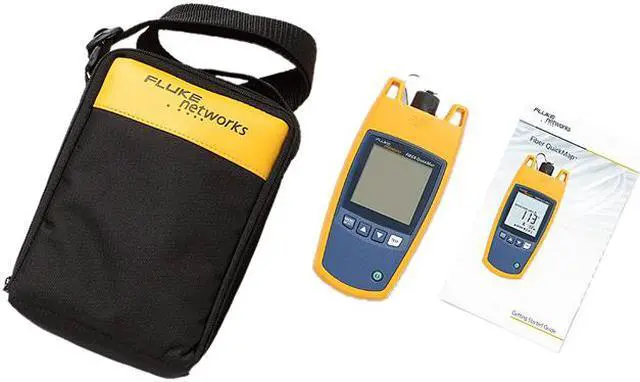
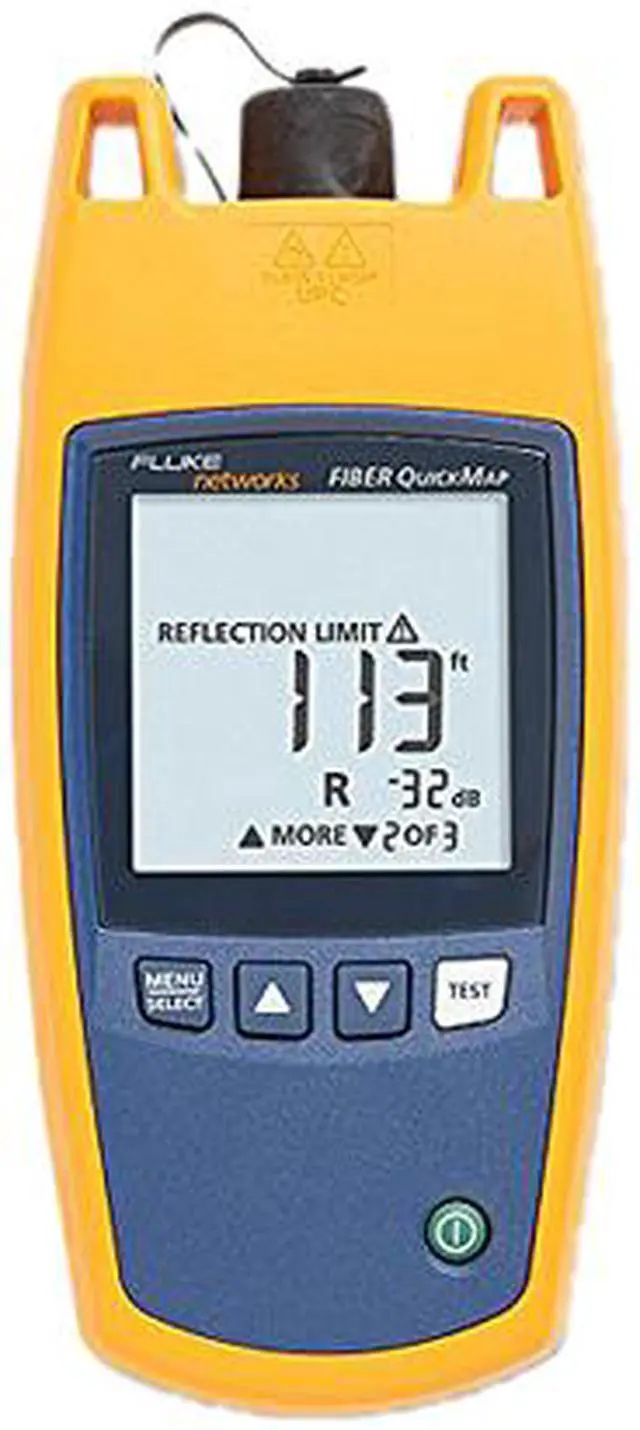
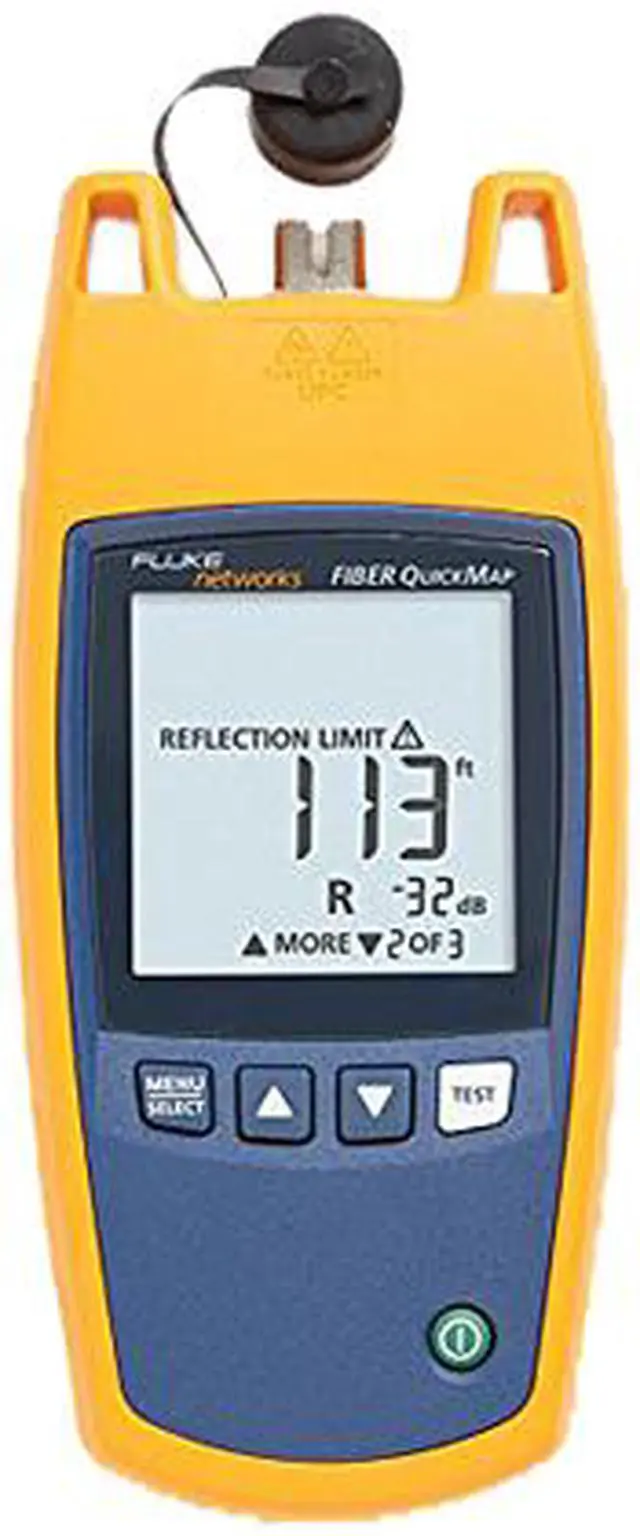
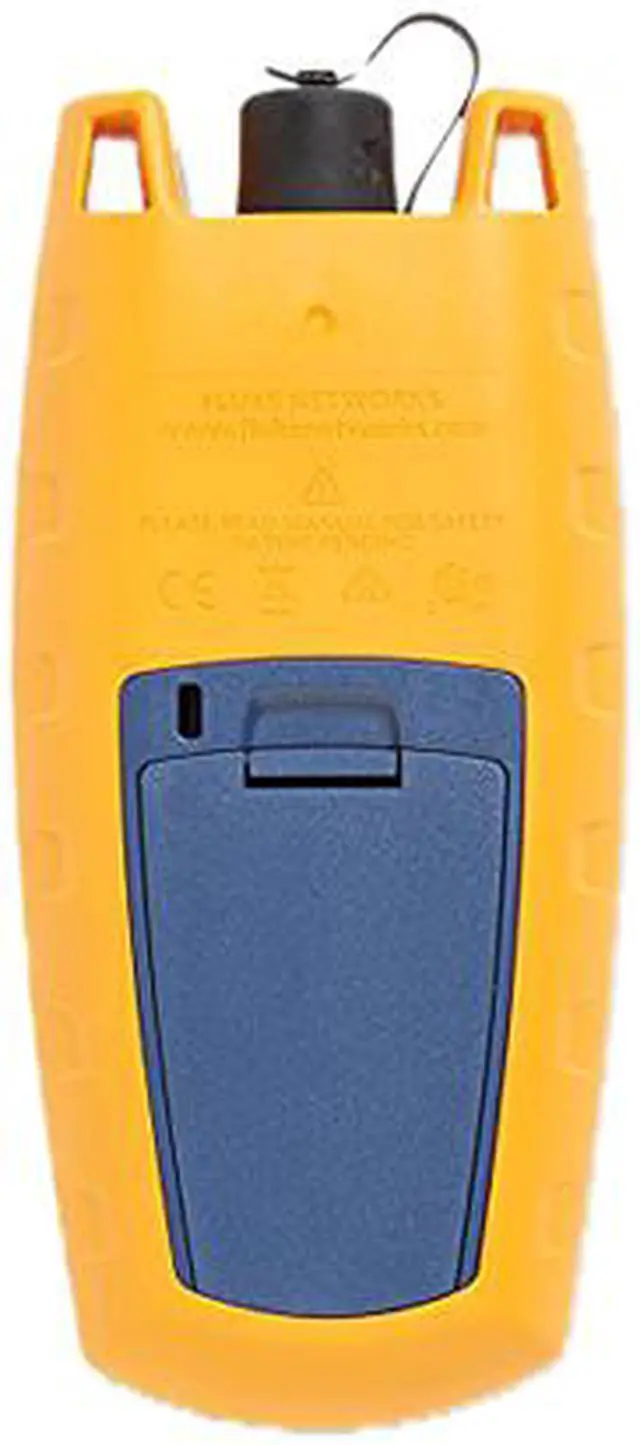
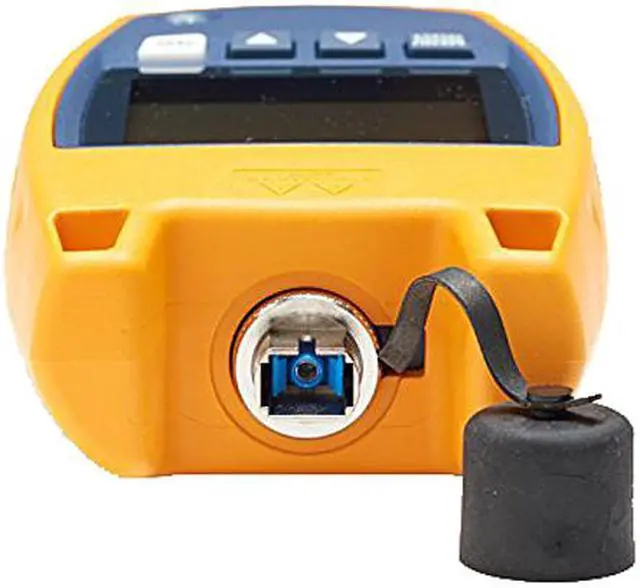
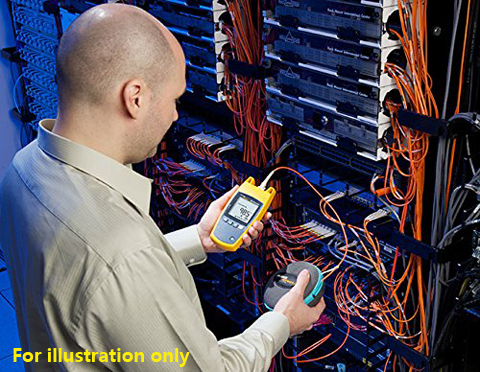
The Fiber QuickMap fault finder from Fluke Networks is used for multi mode fiber to measure the length of a fiber cable and locate high-loss events. This fiber distance and fault locator provides more information that a simple visual fault locator (VFL), but is typically faster and easier to use than an optical time domain reflectometer (OTDR). Its simple one-button design means no training necessary and can cut the average job time significantly. It gives you the testing results within six seconds on its large backlit display, which auto turns off after five minutes of inactivity. Plus, this rugged fiber troubleshooter is vibration and drop tested to 1 meter, making it a reliable tool for technicians working on multi mode fiber.
This FQM-M kit includes multimode fiber fault locator unit, screw on interchangeable SC adapter, 4-language Quick Reference Guide (manuals in 9 languages available on-line), safety instruction manual, and batteries.
One-Button Testing
Fiber QuickMap can be used straight out of the box with no user-setup required. Simply turn it on, connect to the multimode link to be tested, and press the “TEST” button to obtain the channel visibility you need in order to quickly troubleshoot or verify connectivity. No need to fiddle with settings, fiber types, or standards.
Six-second Troubleshooting
The Fiber QuickMap troubleshooter, as a single-ended instrument, cuts down your troubleshooting time from hours to mere seconds. Averaging six seconds of test time, it quickly provides the visibility and data necessary to locate and fix any issues with your multimode fiber cabling. Tools normally used for troubleshooting are typically inefficient, ineffective, or both. Visual fault locators, lasers, or flashlights, while easy to use, have extremely limited troubleshooting capabilities because they are unable to distinguish or locate problematic loss or reflective incidents. They also require that the user maintain visual contact with the cabling while tracing its length to locate any faults. Not only is this process time-intensive, it is also unrealistic in many data center and campus environments in which the links run underneath floor tiles, behind walls, or underground. Power meters and sources are great for testing the entire channel to verify power and loss, but are inefficient for troubleshooting because the user must sequentially test a channel link-by-link, which can take several hours depending on the length of the channel and the number of links.
Obtain Critical Visibility into the Multimode Channel
Having visibility into all the connection incidents within a channel is imperative because they are where most fiber failures in enterprise environments occur. The Fiber QuickMap troubleshooter will display the distances to multiple* connection incidents all the way until the end of (or break in) the link.
* A maximum of nine incidents can be displayed
Locate Causes of Bit-Error Rates
While connector reflectance is a normal phenomenon in fiber cabling, too much of it can actually cause problems, especially within high bandwidth (10+ Gbps) systems. Excessive reflectance (usually caused by dirty end-faces or poor polishing) interferes with transmitter output, resulting in bit-error issues. Being able to locate and measure high reflective incidents helps to optimize network performance.
Locate the Most Common Causes of Multimode Fiber Failure
Discovering high loss incidents within a multimode channel is critical because they are the source of most enterprise fiber failures. These macrobends, contaminated, or damaged fiber end-faces that can create high loss are invisible to visual fault locators, flashlights, and power meters. With a Fiber QuickMap, however, the user can quickly define loss thresholds to flag and locate any incidents of high loss.
Warranty Notice:
This product does not include manufacturer warranty when purchased or used outside of its designated sales region. By purchasing internationally, you acknowledge that warranty support from the manufacturer will not be available.